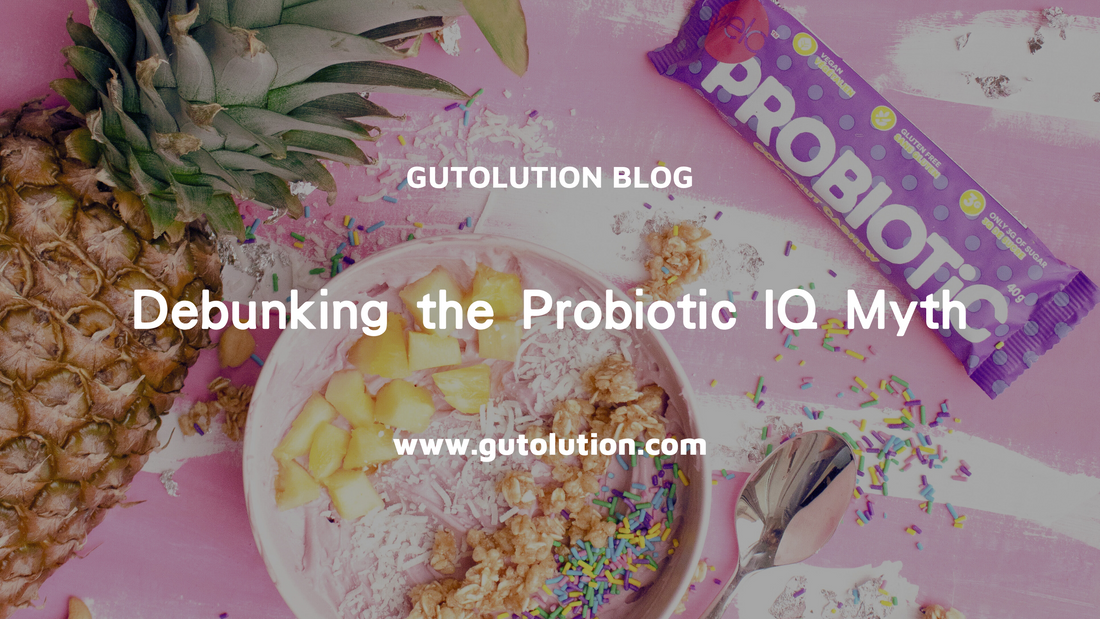近年來,益生菌因其改善腸道健康、降低某些疾病風險的潛力而受到廣泛關注。但益生菌到底是什麼,它們是否真的能夠實現吹捧中的效果?請加入我們的旅程,深入瞭解益生菌的世界,探索這些「好細菌」如何積極影響我們的腸道健康,對抗有害條件並促進整體福祉。
深入了解益生菌
在我們深入研究益生菌的好處之前,讓我們先清楚了解益生菌是什麼。益生菌是活的微生物,通常被稱為「好細菌」,在適量攝取時具有健康益處。這些有益細菌天然存在於某些食物中,也可以作為補充劑來攝取。
益生菌與預防疾病
A. 腸道健康與炎症性腸疾病(IBD)
炎症性腸疾病,如克羅恩病和潰瘍性大腸炎,以消化道的慢性炎症為特徵。令人鼓舞的是,乳酸菌和雙歧桿菌等特定菌株顯示出在減少炎症和緩解患有IBD的人症狀方面的潛力。
腸道不健康的徵兆:
- 炎症標記物的水平升高 (1)
- 腸道微生物組成改變(2)
- 腸道屏障功能受損(3)
- 短鏈脂肪酸(SCFA)的產生減少(4)
益生菌產生的有益物質:
- 短鏈脂肪酸(SCFA):
乳酸菌和雙歧桿菌菌株產生醋酸、丙酸和丁酸,支持健康的腸道屏障,為結腸細胞提供能量,並具有抗炎特性。(5)
- 乳酸菌素:
某些乳酸菌和雙歧桿菌菌株產生抗微生物化合物,抑制有害細菌的生長。(6)
- 粘液蛋白:
- 抗氧化劑:
特定的乳酸菌和雙歧桿菌菌株產生抗氧化劑,保護腸道免受氧化壓力和炎症的影響。(8)
B. 肥胖和代謝性疾病
腸道細菌失衡與肥胖和代謝性疾病有關,可能導致體重增加和肝臟脂肪積聚。值得注意的是,乳酸菌gasseri和雙歧桿菌lactis等益生菌已被發現可以減少脂肪積聚,改善代謝指標,對患有脂肪肝病的人產生積極影響。
肥胖相關腸道的徵兆:
- Firmicutes菌的水平增加(9)
- Bacteroidetes菌的水平降低(9)
- 短鏈脂肪酸(SCFA)的產生變化(10)
- 腸道滲透性增加(11)
- 膽酸代謝改變(12)
益生菌產生的有益物質:
- 短鏈脂肪酸(SCFA):
乳酸菌gasseri和雙歧桿菌lactis可能促進短鏈脂肪酸的產生,增強能量消耗,增加脂肪氧化,減少脂肪儲存。(13)
- 膽酸代謝:
這些益生菌可以影響膽酸代謝,影響脂肪吸收和代謝。(12)
- 腸道屏障完整性:
乳酸菌gasseri和雙歧桿菌lactis有助於維護健康的腸道屏障,防止有害物質進入血液中,減少炎症反應。(14)
- 食慾和滿足感的調節:
這些益生菌可能影響調節食慾的荷爾蒙,有助於更好地調節食慾和體重管理。(15)(16)
C. 免疫功能和過敏
益生菌在調節免疫系統方面起著關鍵作用。例如,乳酸菌rhamnosus和雙歧桿菌lactis等菌株已被證明能降低過敏風險,改善免疫反應。
不健康腸道和免疫受損的徵兆:
- 短鏈脂肪酸(SCFA)的產生減少(17)
- 腸道滲透性增加(18)
- 菌群失調或不平衡的腸道微生物群落(19)
- 免疫調節分子的產生變化(17)
益生菌對免疫功能的影響:
- 細胞因子的誘導:
像乳酸菌rhamnosus和雙歧桿菌lactis等菌株會刺激細胞因子的產生,這在調節免疫反應和促進平衡的免疫系統中起著重要作用。 (20)
- 強化腸道屏障功能:
乳酸菌rhamnosus和雙歧桿菌lactis菌株增強腸道屏障的完整性,防止有害物質、病原體和過敏原進入血液循環系統。(21)
- 調節免疫細胞活性:
這些益生菌菌株能夠影響免疫細胞的活性和功能,有助於更強大的免疫反應。(22)
- 心理健康和情緒障礙:
腸道-大腦軸突破性研究領域揭示了腸道菌叢對心理健康和情緒障礙的深遠影響。值得注意的是,雙歧桿菌longum和乳酸菌helveticus等益生菌在積極影響情緒、減輕焦慮和憂鬱症狀,並促進整體心理健康方面表現出有希望的效果。
不健康腸道和心理健康疾病的徵兆:
- 菌群失調或不平衡的腸道微生物群落(23)
- 腸道滲透性增加(24)
- 神經傳遞物質和神經活性物質(如多巴胺)的產生變化。這些神經傳遞物質的不平衡與情緒障礙有關。(25)
- 發炎和免疫失調。炎症過程可能破壞正常的多巴胺功能,導致動機、運動活動和與情緒相關的症狀的改變。(26)
益生菌對心理健康的影響:
- 神經傳遞物質調節:
像雙歧桿菌longum和乳酸菌helveticus等菌株能夠影響多巴胺等神經傳遞物質的產生和代謝,這些神經傳遞物質是情緒、焦慮和壓力反應的關鍵調節劑。(27)
- 腸道屏障完整性和滲透性:
雙歧桿菌longum和乳酸菌helveticus已展示出增強腸道屏障功能的潛力,減少可影響心理健康的促炎分子的滲透。(28)
益生菌釋放的其他有益物質
除了眾多的健康益處外,益生菌還釋放出一系列其他有益物質,包括:
- 維生素B:
益生菌菌株能夠產生多種B族維生素,這些維生素在能量代謝、神經功能和整體細胞健康中扮演著重要角色。(29)
- 維生素K:
某些乳酸菌和雙歧桿菌菌株能夠產生維生素K,這對血液凝固、骨骼健康和心血管健康至關重要。(29)
- 氨基酸:
益生菌能夠產生多種氨基酸,這些氨基酸是蛋白質的組成單位,對於各種生理過程至關重要。(29)
- 細菌素:
某些益生菌菌株產生的抗菌化合物,能夠抑制有害細菌的生長,並對腸道整體抗菌防禦起到作用。(29)
- 酶:
益生菌能夠產生有助於消化和分解複雜分子的酶,改善消化,減輕乳糖不耐症等症狀。(29)
- 免疫調節化合物:
益生菌菌株釋放出多種免疫調節化合物,與免疫系統互動,有助於調節免疫反應,維持免疫功能的平衡。(29)
結論
益生菌,這些「好菌」因其潛在的健康益處而受到重視。了解益生菌對腸道健康、疾病預防、免疫功能、心理健康以及有益物質的影響,能夠提供有價值的見解,揭示了它們在促進整體健康中的作用。
通過將益生菌納入我們的飲食中或作為補充劑使用,我們可以支持多樣且平衡的腸道微生物群落,增強腸道屏障功能,調節免疫反應,並潛在地減少患上炎症性腸病、肥胖、過敏和心理障礙等各種疾病的風險。
然而,需要注意的是,不是所有的益生菌都是相同的。具體的菌株、劑量和補充時間可能因個人需求和健康狀況而有所不同。諮詢醫療專業人士或註冊營養師可以幫助確定最適合的益生菌方案,以獲得最佳的健康效益。
感謝您的閱讀,希望這篇文章對您有所啟發和幫助!
參考資料:
- Scaldaferri, F., Gerardi, V., Lopetuso, L. R., Del Zompo, F., Mangiola, F., Boškoski, I., Bruno, G., Petito, V., Laterza, L., Cammarota, G., Gaetani, E., Sgambato, A., & Gasbarrini, A. (2013). Gut microbial flora, prebiotics, and probiotics in IBD: Their current usage and utility. BioMed Research International, 2013, 1-9. https://doi.org/10.1155/2013/435268
- Frank, D. N., St. Amand, A. L., Feldman, R. A., Boedeker, E. C., Harpaz, N., & Pace, N. R. (2007). Molecular-phylogenetic characterization of microbial community imbalances in human inflammatory bowel diseases. Proceedings of the National Academy of Sciences, 104(34), 13780-13785. https://doi.org/10.1073/pnas.0706625104
- Bischoff, S. C., Barbara, G., Buurman, W., Ockhuizen, T., Schulzke, J., Serino, M., Tilg, H., Watson, A., & Wells, J. M. (2014). Intestinal permeability – a new target for disease prevention and therapy. BMC Gastroenterology, 14(1). https://doi.org/10.1186/s12876-014-0189-7
- Louis, P., & Flint, H. J. (2016). Formation of propionate and butyrate by the human colonic microbiota. Environmental Microbiology, 19(1), 29-41. https://doi.org/10.1111/1462-2920.13589
- Pryde, S. E., Duncan, S. H., Hold, G. L., Stewart, C. S., & Flint, H. J. (2002). The microbiology of butyrate formation in the human colon. FEMS Microbiology Letters, 217(2), 133-139. https://doi.org/10.1111/j.1574-6968.2002.tb11467.x
- Cotter, P. D., Ross, R. P., & Hill, C. (2012). Bacteriocins — a viable alternative to antibiotics? Nature Reviews Microbiology, 11(2), 95-105. https://doi.org/10.1038/nrmicro2937
- Etzold, S., & Juge, N. (2014). Structural insights into bacterial recognition of intestinal mucins. Current Opinion in Structural Biology, 28, 23-31. https://doi.org/10.1016/j.sbi.2014.07.002
- Klinder, A., Shen, Q., Heppel, S., Lovegrove, J. A., Rowland, I., & Tuohy, K. M. (2016). Impact of increasing fruit and vegetables and flavonoid intake on the human gut microbiota. Food & Function, 7(4), 1788-1796. https://doi.org/10.1039/c5fo01096a
- Turnbaugh PJ, Ley RE, Mahowald MA, Magrini V, Mardis ER, Gordon JI. (2006). An obesity-associated gut microbiome with increased capacity for energy harvest. Nature. 444(7122), 1027-1031. doi:10.1038/nature05414. PMID: 17183312.
- Koh, A., De Vadder, F., Kovatcheva-Datchary, P., & Bäckhed, F. (2016). From dietary fiber to host physiology: Short-chain fatty acids as key bacterial metabolites. Cell, 165(6), 1332-1345. https://doi.org/10.1016/j.cell.2016.05.041
- Cani, P. D., Amar, J., Iglesias, M. A., Poggi, M., Knauf, C., Bastelica, D., Neyrinck, A. M., Fava, F., Tuohy, K. M., Chabo, C., Waget, A., Delmée, E., Cousin, B., Sulpice, T., Chamontin, B., Ferrières, J., Tanti, J., Gibson, G. R., Casteilla, L., … Burcelin, R. (2007). Metabolic Endotoxemia initiates obesity and insulin resistance. Diabetes, 56(7), 1761-1772. https://doi.org/10.2337/db06-1491
- Sayin, S., Wahlström, A., Felin, J., Jäntti, S., Marschall, H., Bamberg, K., Angelin, B., Hyötyläinen, T., Orešič, M., & Bäckhed, F. (2013). Gut microbiota regulates bile acid metabolism by reducing the levels of tauro-beta-muricholic acid, a naturally occurring FXR antagonist. Cell Metabolism, 17(2), 225-235. https://doi.org/10.1016/j.cmet.2013.01.003
- Kimura, I., Ozawa, K., Inoue, D., Imamura, T., Kimura, K., Maeda, T., Terasawa, K., Kashihara, D., Hirano, K., Tani, T., Takahashi, T., Miyauchi, S., Shioi, G., Inoue, H., & Tsujimoto, G. (2013). The gut microbiota suppresses insulin-mediated fat accumulation via the short-chain fatty acid receptor GPR43. Nature Communications, 4(1). https://doi.org/10.1038/ncomms2852
- Le Roy, T., Llopis, M., Lepage, P., Bruneau, A., Rabot, S., Bevilacqua, C., Martin, P., Philippe, C., Walker, F., Bado, A., Perlemuter, G., Cassard-Doulcier, A., & Gérard, P. (2012). Intestinal microbiota determines development of non-alcoholic fatty liver disease in mice. Gut, 62(12), 1787-1794. https://doi.org/10.1136/gutjnl-2012-303816
- Kadooka, Y., Sato, M., Imaizumi, K., Ogawa, A., Ikuyama, K., Akai, Y., Okano, M., Kagoshima, M., & Tsuchida, T. (2010). Regulation of abdominal adiposity by probiotics (Lactobacillus gasseri SBT2055) in adults with obese tendencies in a randomized controlled trial. European Journal of Clinical Nutrition, 64(6), 636-643. https://doi.org/10.1038/ejcn.2010.19
- Yadav, H., Lee, J., Lloyd, J., Walter, P., & Rane, S. G. (2013). Beneficial metabolic effects of a probiotic via butyrate-induced GLP-1 hormone secretion. Journal of Biological Chemistry, 288(35), 25088-25097. https://doi.org/10.1074/jbc.m113.452516
- Belkaid, Y., & Hand, T. (2014). Role of the microbiota in immunity and inflammation. Cell, 157(1), 121-141. https://doi.org/10.1016/j.cell.2014.03.011
- Fasano, A. (2011). Zonulin and its regulation of intestinal barrier function: The biological door to inflammation, autoimmunity, and cancer. Physiological Reviews, 91(1), 151-175. https://doi.org/10.1152/physrev.00003.2008
- Honda, K., & Littman, D. R. (2016). The microbiota in adaptive immune homeostasis and disease. Nature, 535(7610), 75-84. https://doi.org/10.1038/nature18848
- Gill, H. S., Rutherfurd, K. J., Cross, M. L., & Gopal, P. K. (2001). Enhancement of immunity in the elderly by dietary supplementation with the probiotic Bifidobacterium lactis HN019. The American Journal of Clinical Nutrition, 74(6), 833-839. https://doi.org/10.1093/ajcn/74.6.833
- Ismail, I. H., Licciardi, P. V., & Tang, M. L. (2013). Probiotic effects in allergic disease. Journal of Paediatrics and Child Health, 49(9), 709-715. https://doi.org/10.1111/jpc.12175
- Hoarau, C., Lagaraine, C., Martin, L., Velge-Roussel, F., & Lebranchu, Y. (2006). Supernatant of Bifidobacterium breve induces dendritic cell maturation, activation, and survival through a toll-like receptor 2 pathway. Journal of Allergy and Clinical Immunology, 117(3), 696-702. https://doi.org/10.1016/j.jaci.2005.10.043
- Jiang, H., Ling, Z., Zhang, Y., Mao, H., Ma, Z., Yin, Y., Wang, W., Tang, W., Tan, Z., Shi, J., Li, L., & Ruan, B. (2015). Altered fecal microbiota composition in patients with major depressive disorder. Brain, Behavior, and Immunity, 48, 186-194. https://doi.org/10.1016/j.bbi.2015.03.016
- Kelly, J. R., Kennedy, P. J., Cryan, J. F., Dinan, T. G., Clarke, G., & Hyland, N. P. (2015). Breaking down the barriers: The gut microbiome, intestinal permeability and stress-related psychiatric disorders. Frontiers in Cellular Neuroscience, 9. https://doi.org/10.3389/fncel.2015.00392
- Strandwitz, P. (2018). Neurotransmitter modulation by the gut microbiota. Brain Research, 1693, 128-133. https://doi.org/10.1016/j.brainres.2018.03.015
- Felger, J. C., & Treadway, M. T. (2016). Inflammation effects on motivation and motor activity: Role of dopamine. Neuropsychopharmacology, 42(1), 216-241. https://doi.org/10.1038/npp.2016.143
- Messaoudi, M., Violle, N., Bisson, J., Desor, D., Javelot, H., & Rougeot, C. (2011). Beneficial psychological effects of a probiotic formulation (Lactobacillus helveticusR0052 and<i>Bifidobacterium longum</i>R0175) in healthy human volunteers. Gut Microbes, 2(4), 256-261. https://doi.org/10.4161/gmic.2.4.16108
- O'Mahony S.M., Clarke G., Borre Y.E., Dinan, T.G., & Cryan, J.F. (2015). Serotonin, tryptophan metabolism and the brain-gut-microbiome axis. Behav Brain Res, 277, 32-48. https://doi.org/10.1016/j.bbr.2014.07.027
- Indira, M., Venkateswarulu, T. C., Abraham Peele, K., Nazneen Bobby, M., & Krupanidhi, S. (2019). Bioactive molecules of probiotic bacteria and their mechanism of action: A review. 3 Biotech, 9(8). https://doi.org/10.1007/s13205-019-1841-2


 Whatsapp us!
Whatsapp us!